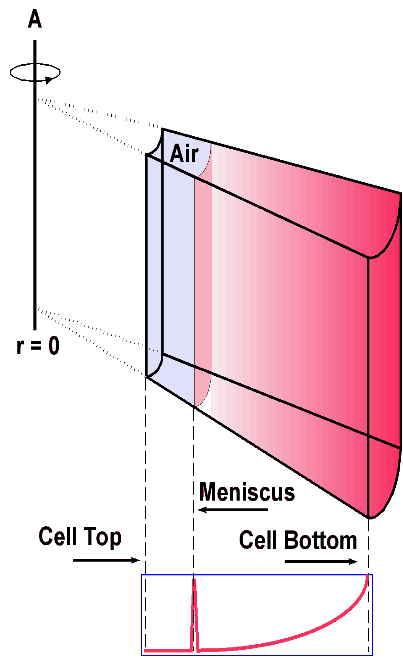Sedimentation Equilibrium Experiments
Sedimentation equilibrium is a technique where the sample is spun at lower rotor speeds than in a velocity experiment. The sample will simultaneously sediment and back-diffuse from the bottom of the cell and produce a gradient, which will not change once equilibrium is obtained. As soon as equilibrium has been obtained, net flow of material in the cell will cease and sedimentation and diffusion will balance each other. The curvature of the gradient can be influenced by varying the rotor speed, and multiple gradients obtained at different speeds can be used to globally fit the data to a model. While not very sensitive for the detection of heterogeneity (velocity analysis is better suited), equilibrium experiments provide molecular weight with superior accuracy for monodisperse systems and can provide thermodynamic information such as binding strength for reversible hetero- or self-associating systems. Sedimentation equilibrium analysis is often used to confirm the presence of a single oligomeric state of a protein.

Equilibrium Experiment: the rotor speed is slow enough such that the back diffusion at the bottom of the cell will balance out the sedimentation and form an equilibrium gradient.
